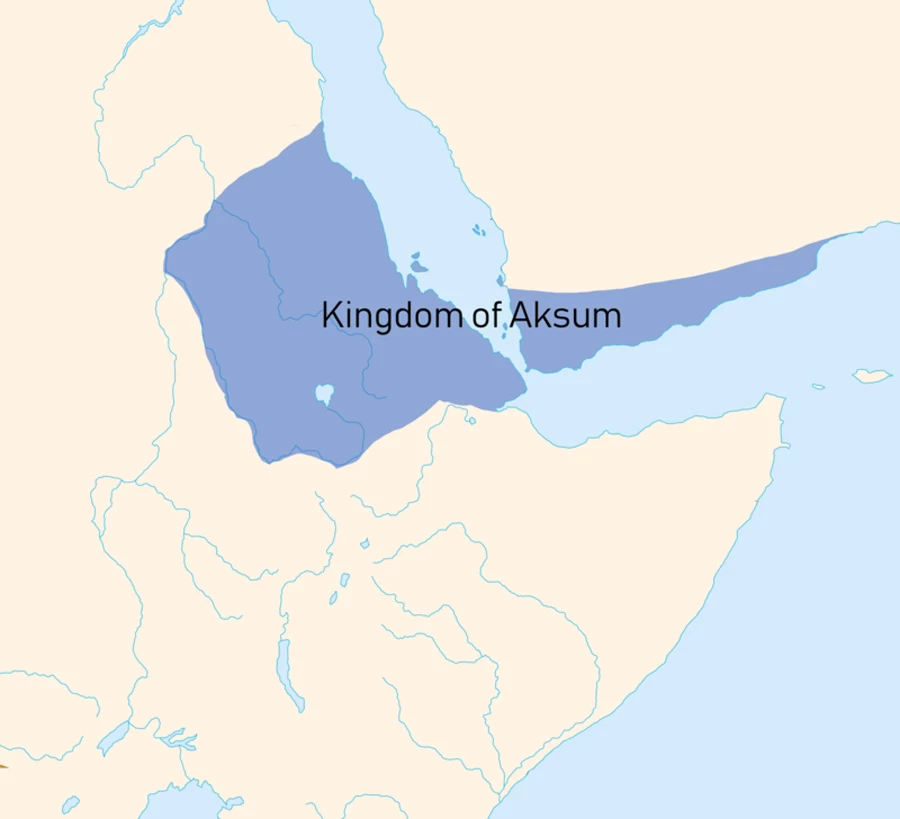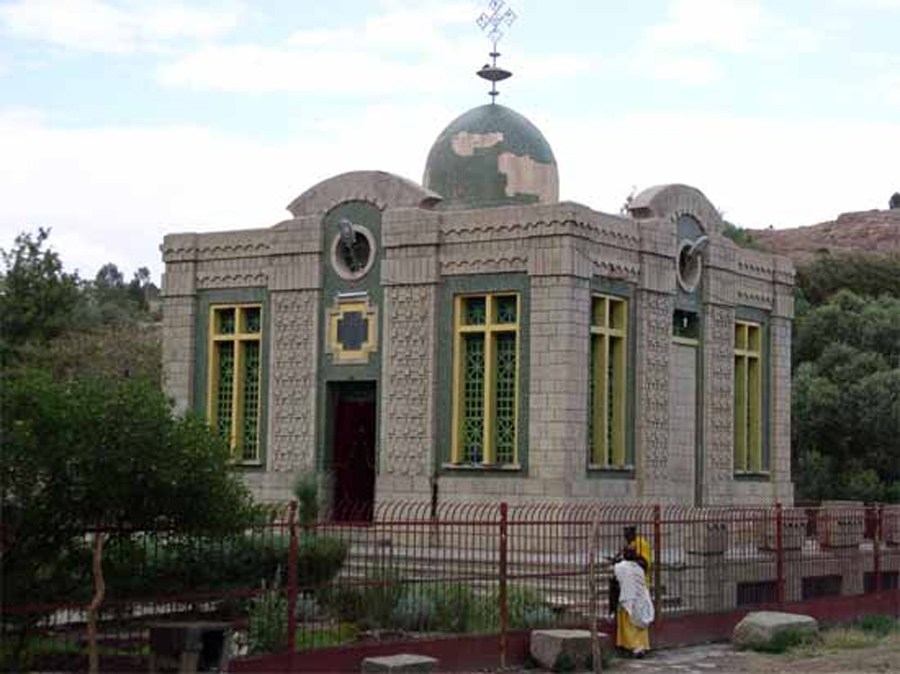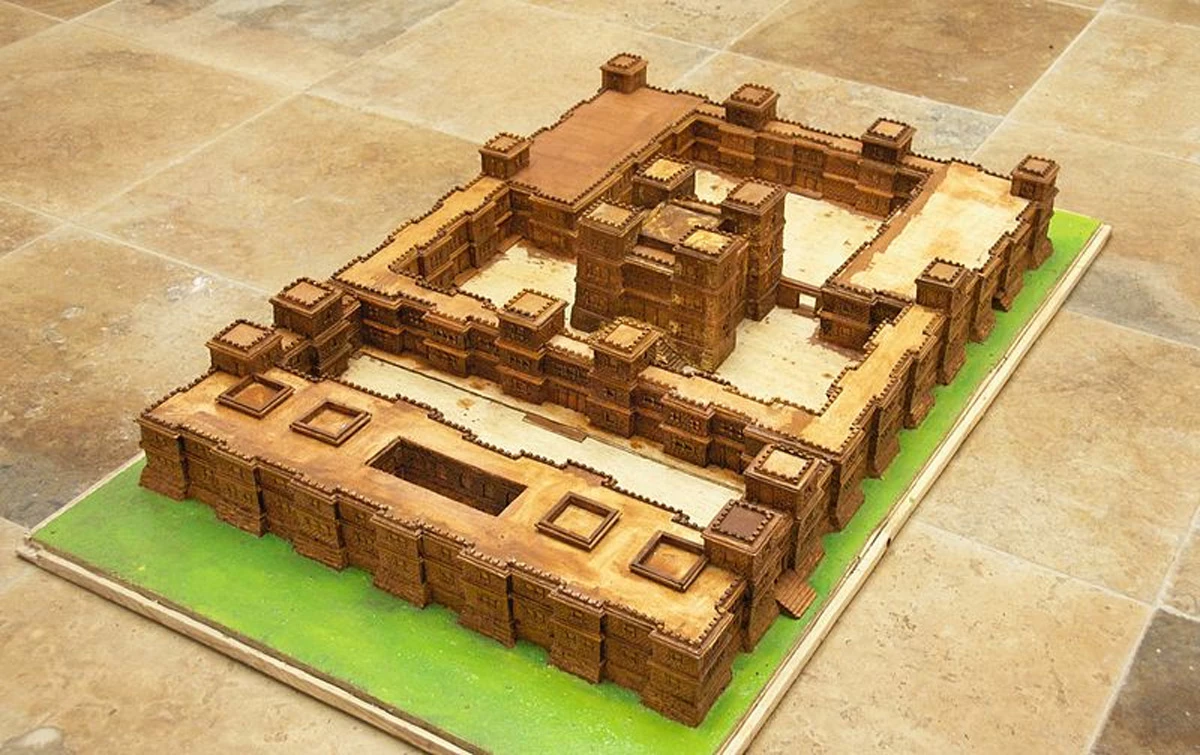The 3rd century Persian profit Mani, the founder of Manicheism, identified four great empires in the world. He spoke of Rome, China, Persia, and Aksum.
What was Aksum, ands who were its people? And why do we not remember this kingdom, which ranked among the greatest in the ancient world?
The Kingdom of Aksum
Of course, there is one famous civilization missing from the list, and in its absence lies the first clue at to where Aksum came from. The great civilization of Egypt had by this point been subsumed into the Roman empire, and its collapse and fragmentation gave room for its neighbors to grow powerful and expand.
Aksum was based to the south east of Egypt, in the highlands of Tigray in present-day Ethiopia. It also included parts of Eritrea, eastern Sudan and, across the Gulf of Aden, much of modern day Yemen as well.
Aksum was known for its formidable naval forces and military might. The kingdom was also a powerful trading nation and had well established links with the other three great powers of the era. Through these trade links it grew wealthy, building great monuments, developing a sophisticated written script, and introducing Christianity to sub-Saharan Africa.
The kingdom is likely to have been founded during the 1st century AD and flourished from the 3rd to 6th century AD. Since the stone age, humans had occupied the region, and the agrarian communities thrived there for about a millennium. However, the origins of Aksum still remain a mystery.
Rise of the Kingdom of Aksum
Before Aksum, there was the kingdom of D’mt. Possibly arriving from Yemen across the water, this small kingdom had established themselves on the western shore of the Red Sea. But very little is known of this enigmatic kingdom and their relationship with Aksum. Were they replaced by the Aksumites, or possibly did they become the Aksumites themselves?

What seems most likely is that, following a period of decline for the D-mt, they fragmented and were replaced by a number of smaller kingdoms in the region. These kingdoms slowly came together in the 1st century AD and eventually became known as the large kingdom of Aksum.
- Meroe: Sudan’s Ancient Lost City of The Sands
- Egyptology and A Brief History of Egypt
The local geography of Aksum also contributed to its rise. Their capital city, also called Aksum, was located at the crossroads of prominent trade routes, and the fertile soil, climate, and rainfall patterns of the city made the region ideal for agriculture and herding of livestock.
The people of Aksum made the most of the opportunities available to them. Ivory and gold were the most valuable commodities for export, but they fully exploited all the resources of the region to enrich themselves. Rhinoceros horns, salt, emeralds, tortoise shells, myrrh, live animals, and slaves all came out of this flourishing power.
In return the Aksumites imported steel, iron, textiles, spices, jewelry, glassware, wine, olive oil, and weapons. Through the trade routes Aksum established across the Middle East, South Arabia, Egypt, China, and India, they grew rich and strong. The kingdom of Aksum was known to be the first African country to mint its own coins, of bronze, silver, and gold.
During the 3rd to the 6th centuries AD, the kingdom of Aksum rose to its peak of power. During those years, Aksum was a stratified, prosperous society with a clear hierarchy and division between the people and their rulers.
<iframe width=”987″ height=”541″ src=”https://www.youtube.com/embed/S3G5ZklLkm0″ title=”YouTube video player” frameborder=”0″ allow=”accelerometer; autoplay; clipboard-write; encrypted-media; gyroscope; picture-in-picture” allowfullscreen></iframe>
Their capital city grew in terms of size, population, as well as the complexity of development. Through warfare, Aksum was also able to expand its territory. During the 4th century AD, King Ezana I of Aksum was even able to conquer the city-state of Meroe, which had been Egypt’s powerful southern neighbor for centuries.
The Genesis of African Christianity
Ezana I was not just a warmonger, however. The king of Aksum also officially adopted Christianity, replacing the indigenous polytheistic religion previously practiced by the Aksumites. Aksum also had some local quirks in its religion, such as the inclusion of Mahram, god of upheaval, war, and monarchy.

Other notable gods of the Aksumites were Hawbas, the moon deity, and Meder and Beher, the chthonic gods. In Astar, they also had their own representation of Venus. Various sacrifices were made by the people in order to honor those gods, and these seem to have been tolerated alongside Christianity, at least for a time.
It seems likely that Christianity was first introduced in the region through Egyptian traders and the missionaries that travelled with them. The kingdom of Aksum may have officially accepted Christianity owing to its important trade connections with the north African provinces of the Roman empire, also recently Christian.
The diplomatic connections of Aksum with Constantinople in the eastern Roman empire may have also accounted for the introduction of Christianity. However, there is also a more fanciful story as to the origin of Aksumite Christianity.
Traditional accounts tell of Frumentius, a shipwrecked traveler from Tyre in modern day Lebanon. This Frumentius was responsible for the introduction of Christianity in the kingdom of Aksum, serving as a teacher for the royal children, and later becoming the advisor and treasurer to the king, Ella Amida, the father of Ezana I.
- Italy’s Quest for the Ark of the Covenant in Ethiopia
- Who Built the Abandoned City of Djado? A Saharan Mystery
The form of Christianity in the kingdom of Aksum was similar to that in Coptic Egypt, and the Christian Patriarch of Alexandria was the figurehead in the Ethiopian Church. Aksumite churches were constructed, monasteries were founded, and the Bible was translated into different languages. The Church of Maryam Tsion, which famously today claims to house the original Ark of the Covenant, was the most important church in the kingdom of Aksum.
Writing and Art
The kingdom of Aksum had a writing system all of its own. One of the earliest examples of the writing system could be found on the schist rock slabs dating from the 2nd century AD. The script, known as Ethiopic or Ge’ez, resembles the languages of southern Arabia and apparently evolved from the language of the D’mt. The script is still being used in modern Ethiopia, and Christian Ethiopians have their own Ge’ez version of the Bible.

In terms of art, the kingdom of Aksum had potters who used to produce simple red and black terracotta ware without the use of a wheel. The wares had a matt finish appearance and were often coated with red stain.
Forms of the wares were bowls, cups, and spouted jugs. Geometric designs were decorated with the use of stamps, paintings, incisions, and three-dimensional pieces. One of the common decorative motifs was the Christian cross.
No large-scale statues were discovered from the kingdom of Aksum. However, stone bases, stone thrones, and small-scale figurines have been discovered.
Decline of Aksum
After weathering wars with Persia and internal strife, the kingdom of Aksum finally entered a terminal decline sometime during the late 6th century AD. The migration of western Bedja herders or overutilization of agricultural lands were the main reasons for the decline of the kingdom, although climate change may have also played a part.
Moreover, the policy of the kings of Aksum to give the tribal chiefs a great deal of autonomy also backfired, as this encouraged them to separate and form their own independent states. The loss of mercantile revenue from these breakaway kingdoms undermined the noble class of Aksum.
However, even in the 21st century, the kingdom of Aksum remains inhabited, and here we find the explanation for why they are not remembered today. Two of the other three great empires, Rome and Persia, fell with the passing centuries. China endures, still using her famous name of old.
Top Image: Reconstruction of an Aksumite palace. Source: A. Davey / CC BY 2.0.
By Bipin Dimri
